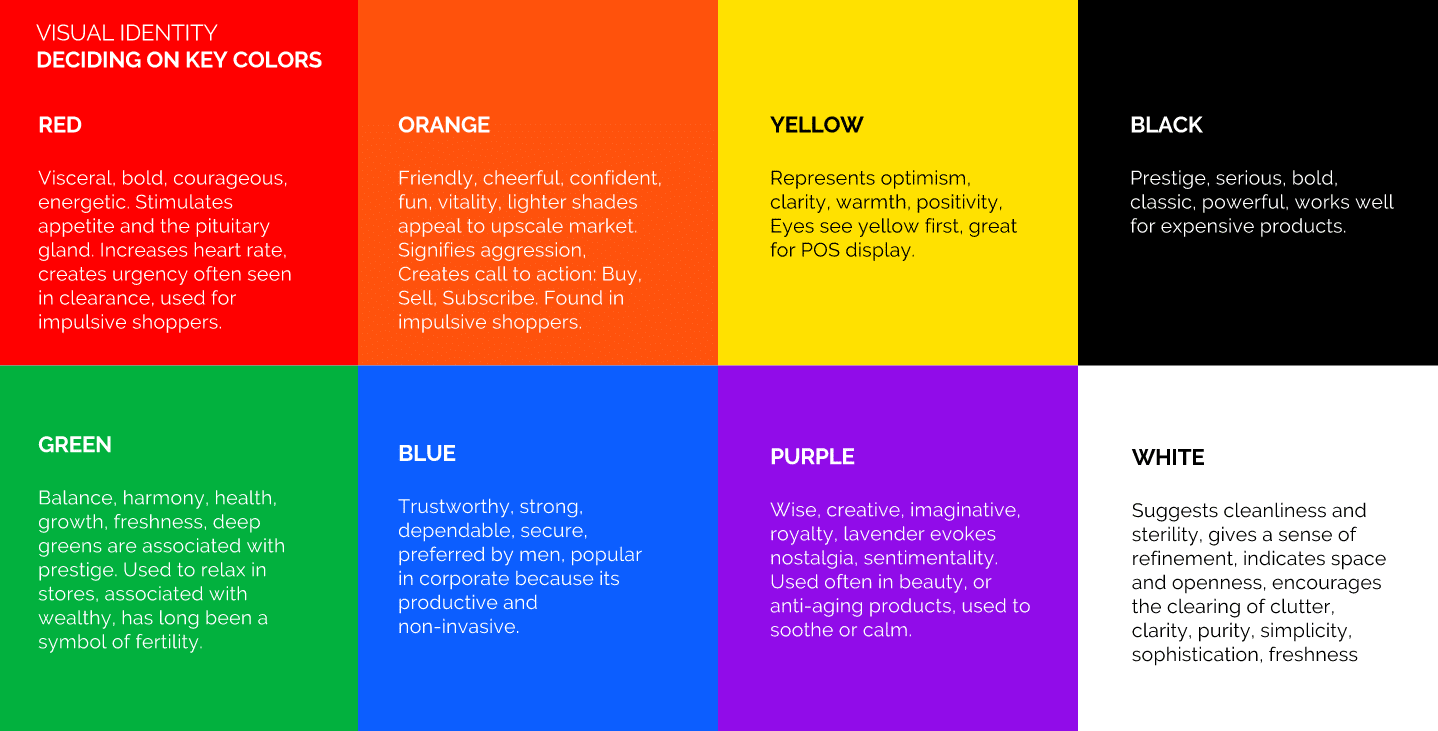Mold your brand with colors by personality: make pink masculine!
We speak a lot about the personality of visual elements. We even dedicated an article to the personality of fonts. To be sure… font choice is insanely critical! Proper typography could have avoided this year’s Oscar blunder. Color palettes are just as significant: you’ve been told that colors can influence people… but did you realize that your brand can also be shaped with colors by personality? We’ll explain why below. But for now, what this really means is that pink CAN be masculine… orange CAN be luxurious…. blue CAN be fun! How? Context matters.
First, let’s understand the purpose of a color palette.
A color palette is a selection of colors and color schemes that provides a visual tone for your brand… that “look and feel” you want to express visually. When anywhere from 62 to 90% of a target audience’s decision is based upon color alone, there’s significance to selecting colors based upon the perception you want to create. So if the palette helps establish that tone, then we need to understand consumer perceptions of colors by personality.
So what are the expectations for colors by personality?
Determining colors by personality has to integrate a complicated mix of perceptions, and cultural experiences. Even if the study of color psychology is lacking formal, scientific data, one need only consider a sampling of global perspectives on color (such as here, or here) to realize that these perceptions do exist. Still, articulating a steadfast rule on colors may be, as this writer noted, as subjective as a Tarot card reading.
But that doesn’t mean throw your hands up! You don’t need a scientific study on color to use it in branding. We know, from our own individual experiences, that target audiences are influenced by color. We know, from our own individual experiences, that certain target audiences associate particular views with specific colors: why else do so many Americans paint a girl’s nursery pink? So, rather than relying on undisputed proof or rules about colors by personality, use known predictions and expectations about your target audience to shape and create the perception you want for your brand. It’s less about the color itself and more about context of your positioning and your target audience. That context is how you can shape color personality so orange can be luxurious.
Let’s consider some common expectations around colors by personality:

Compare these expectations with some actual logos:

Do you see a connection? Does this explain why PayPal uses blue? Why Whole Foods uses green? Those logos and color choices may feel almost stereotypical, like painting a nursery blue for a boy.
But did you notice something else, perhaps a little bit unexpected? Hint: British Petroleum and Whole Foods both use green. Here’s another: compare Harley Davidson’s orange withHermes. Still think pink is feminine? You must not be part of The Pink Lion Rugby Club. Blue isn’t just for the suits over at Chase, Paypal, Capital One, Bank of America, Citibank… it has a little fun, too, at JetBlue.

Why would an oil company and a grocery store both use green? Why would motorcycles and handbags both use orange?
These brands are playing off predictions around your expectations, and, in some instances, challenging them… as part of their effort to draw you in! When the inspiration for Thomas Pink is “contradiction with a dash of cunning,” no wonder the luxury brand uses the color pink. On a rugby ball.

But I still don’t get orange for luxury?
You aren’t alone. Yet, Hermes is highly successful: in 2015, among major luxury brands, it returned the highest after tax profit in 13 of 15 years. According to more than one blog source, its orange boxes stem from a WW2 shortage of paperboard supplies. The color stuck, now rooted in a tradition much younger than the 180-year-old company. Specifically, according to at least one writer, bold, visibility, and tradition are the perceptions that Hermes uses to target consumers. We agree, and posit that it isn’t very far off from the same perceptions that Harley Davidson uses in connecting with its very-different-but-just-as bold target audience.
The question of color personality takes us back to something we consistently raise: your positioning in the market. Color is significant. But you cannot pick a color based on a rule book. It must be part of a well-analyzed visual and verbal identity so that you understand the context and circumstances in which your brand operates.
That is how you make blue fun, orange luxurious, and pink masculine. What other ways can your brand play with expectations of colors by personality?
It makes common sense to hire a branding agency … for branding. And, you can do that in just 2-days with our “Branding Intensive“.







